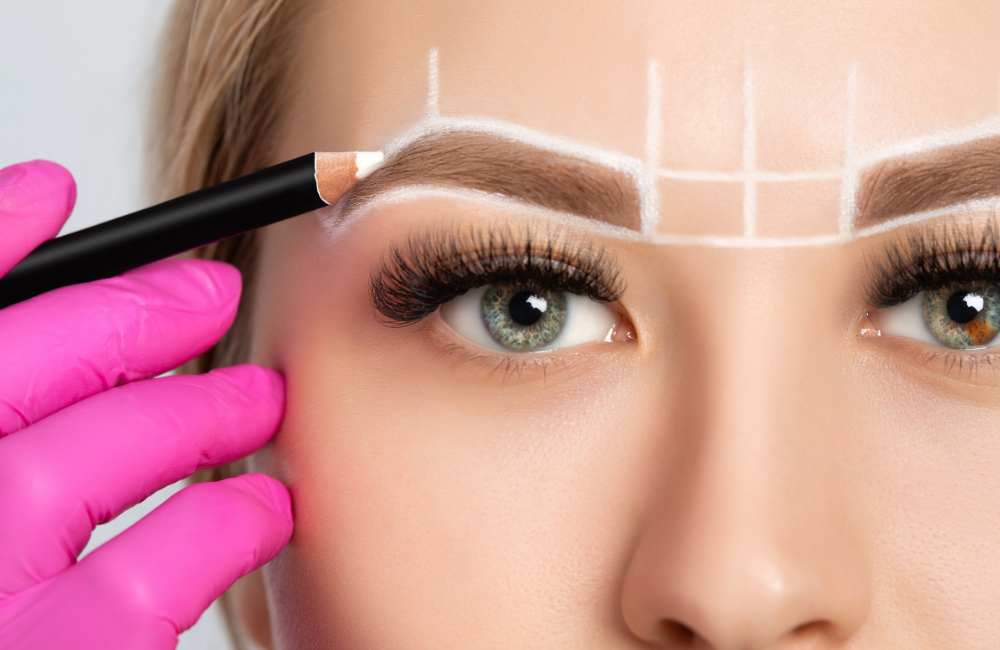Introduction
Eyebrow design is an art that goes beyond the simple act of trimming hairs. It involves a deep understanding of facial symmetry, proportions, and individual characteristics. With the rise in popularity of aesthetic care and beauty trends, eyebrow design has become a crucial element in the harmonious composition of the face, helping to enhance expression and personal style.
The Importance of Eyebrow Design
Eyebrows play a crucial role in non-verbal communication and facial expression. They can convey emotions such as surprise, anger, and joy, and when well-designed, they enhance natural beauty and facial harmony. An appropriate design can transform appearance, highlighting facial features and creating a frame that accentuates the eyes.
Facial Analysis and Symmetry
Shapes and Proportions
The first step to successful eyebrow design is understanding the shape of the face and facial proportions. There are several face shapes, including oval, round, square, and heart-shaped, and each can be complemented by a specific type of eyebrow. For example:
- Oval Face: Can opt for slightly arched eyebrows to maintain balanced proportions.
- Round Face: Angled eyebrows help create the illusion of a longer and more structured face.
- Square Face: Softly arched eyebrows help soften the rigid lines of the jawline.
- Heart-Shaped Face: Arched eyebrows, but not too angular, balance the width of the forehead and the length of the face.
Measurements and Angles
Measuring and marking specific points on the face is crucial for creating a symmetrical and aesthetically pleasing design. The main points to consider are:
- Beginning of the Eyebrow: Should align with the inner corner of the eye.
- Arch of the Eyebrow: Should be positioned to create a natural angle, typically aligned with the iris of the eye.
- End of the Eyebrow: The end should align with the outer corner of the eye, and the end of the eyebrow line should be slightly angled outward.
Design Techniques
Tweezing and Waxing
The most common eyebrow design technique involves using tweezers or wax to remove unwanted hairs. Tweezing is more precise and allows for detailed control, while waxing can be quicker and more efficient for larger areas.
Microblading and Micropigmentation
For a more long-lasting approach, techniques like microblading and micropigmentation offer solutions that can last from 1 to 3 years. Microblading is a semi-permanent method that uses a fine blade to create strokes that mimic natural hairs. Micropigmentation, on the other hand, uses a machine to inject pigment into the upper layer of the skin, providing a more shaded effect.
Eyebrow Design with Henna
Henna application is a temporary alternative that can last up to 6 weeks. It is ideal for those seeking a more natural effect and a color that adapts to existing hair tones.
Maintenance and Care
Eyebrow design requires regular maintenance to preserve the desired shape and color. It is recommended to have maintenance done every 4 to 6 weeks, depending on hair growth and the technique used.
Additionally, it’s important to care for the skin around the eyebrows by using moisturizing products and avoiding excessive sun exposure, which can lead to dehydration and changes in pigment color.
Conclusion
Eyebrow design is a practice that combines art and technique to create a frame that enhances facial beauty and expressiveness. Understanding individual facial characteristics and applying appropriate techniques are essential for achieving satisfactory results. Whether through tweezing, microblading, or henna application, eyebrow design continues to evolve, reflecting the trends and aesthetic needs of each era.
With proper care and a personalized approach, it is possible to achieve perfectly designed eyebrows that enhance natural beauty and individual uniqueness.
Thanks for reading this article | Register with hest right now and start to get automatic appointments!
![]()

